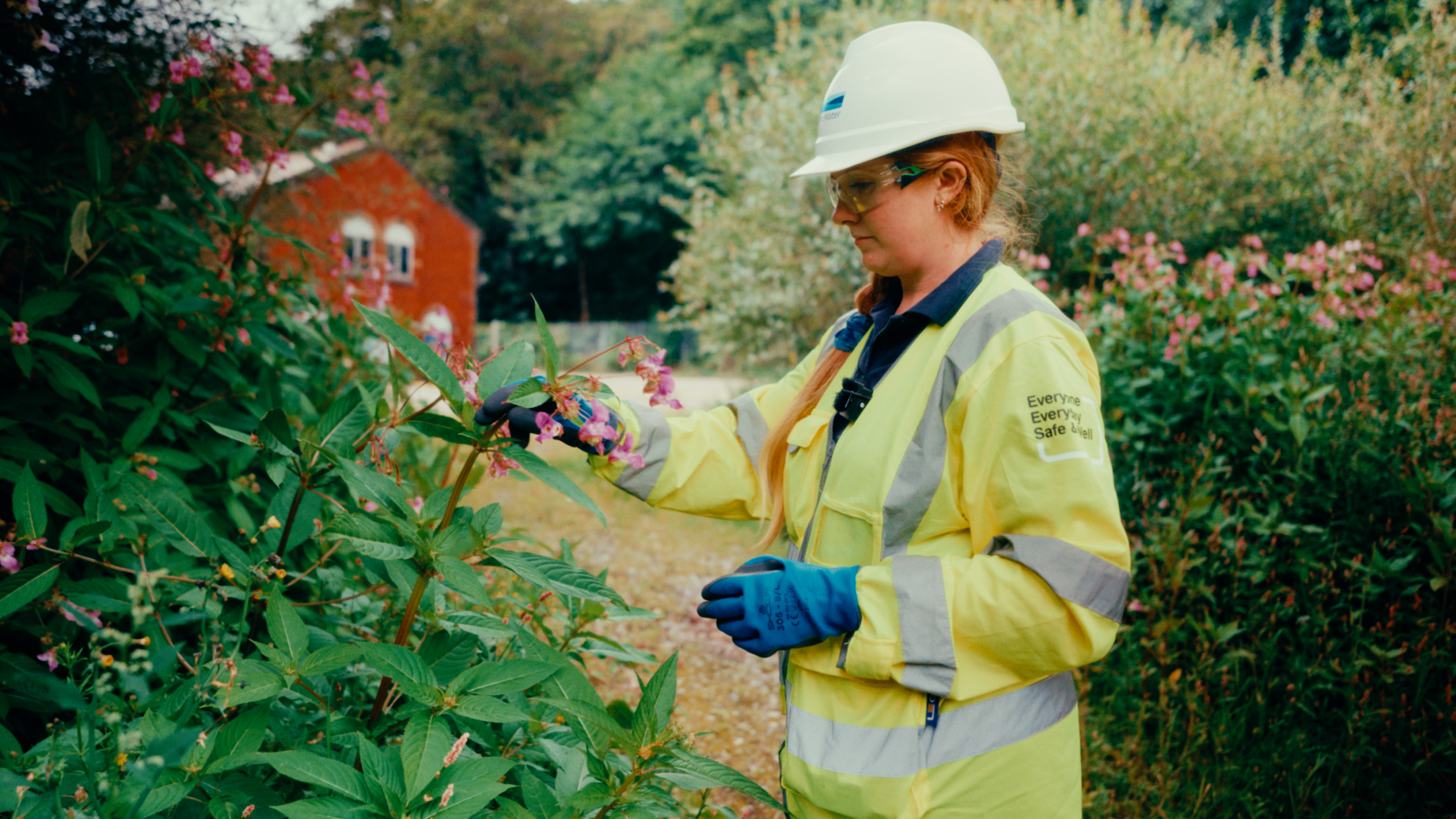Yorkshire Water Biodiversity team and Rangers out and about for INNS Week

5/9/2025
It’s Invasive Species Week next week (Monday 12 May – Sunday 18 May), when we raise awareness of spotting, stopping the spread and controlling invasive species, so that we can create the right environment to enhance biodiversity.
Invasive non-native species (plants and animals) (INNS) threaten the survival of native wildlife and impact our natural ecosystems and native species. INNS can cost the UK economy over £2 billion a year and can harm to our health and spoil the outdoor activities that we all enjoy. Invasive Species Week helps to raise awareness about invasive species, how to spot them, where to report them and what is being done to manage them.
Freshwater can be particularly susceptible to invasive species and next week Yorkshire Water’s biodiversity team and rangers will be out and about at reservoirs across the county with a number of key events. They will be on site to share details of invasive species that put our native species at risk (think red Vs grey squirrels); some hints and tips of how to spot and identify them as well as details of the INNS Mapper app, where members of the public can report sightings of invasive species. This technology helps to provide an effective resource to support INNS programmes and coordinate efforts to manage species across our region.
Dr Steph Bradbeer, lead ecologist (invasive species), Yorkshire Water, said: “We’ve been working hard to improve biosecurity across Yorkshire Water public recreation sites over the last five years. Visitors may well have spotted our boot scrubs on popular walking routes at a Scarhouse, Grimwirth, Fewston, Tophill Low and other reservoirs. They provide a really simple intervention for visitors to clean their footwear before and after enjoying a walking route, which helps to reduce the spread of invasive non-native species (INNS) from one site to another.
“Biosecurity wash down stations have also recently been installed at Swinsty Moor Car Park (at Swinsty and Fewston reservoir) and at Tophill Low Nature Reserve. These help to prevent the spread of INNS on footwear and equipment, such as bikes, conservation equipment and angling gear by removing any tiny INNS that may have been picked up and stop the spread.”
Yorkshire Water rangers team will be on site at Langsett Barn car park from 10am on Thursday 15 May. It’s an opportunity to come along and chat to the ranger team about the local site and our biodiversity INNS team about what Yorkshire Water is doing to tackle invasive species across Yorkshire. There’ll be samples of invasives on hand as well as ID guides so visitors can familiarise themselves with troublesome invasive non-native species that negatively impact our environment and native species.
Yorkshire Water’s biodiversity team lead on a number of projects aimed at improving the region’s biodiversity and protecting native species including:
· Biosecurity Boot Scrubs and Wash down facility installations at , Swinsty & Fewston reservoirs and Tophill Low Nature Reserve
· Yorkshire Water have funded and developed an INNS Mapper app , alongside key partners including the Yorkshire Wildlife Trust since 2023. The app and website for the reporting of sightings, surveys and management of INNS (Invasive Non-Native Species) in England, Wales and Scotland is free to use and aims to provide an effective resource to support INNS programmes and coordinate efforts.
· AQUA Biosecurity Accreditation Scheme - Three Yorkshire Water sites have been awarded an AQUA Bronze Accreditation for Biosecurity since 2023, an act of combating the spread of invasive non-native species. Tophill Low Nature Reserve, Swintsy Reservoir and Fewston Reservoir were each awarded, for the work carried out to raise awareness of biosecurity and prevent the spread of invasive non-native species.
For more information about Yorkshire Water’s biodiversity programmes please click here: Biodiversity INNS Mapper
